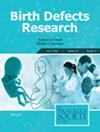Measurement of rat anogenital distance (AGD) dates to at least 1912. Increased interest in endocrine disrupting chemicals and the use of AGD as a biomarker for fetal androgen effects have increased the number of studies with this endpoint in recent decades. A literature review revealed different landmarks, methods of measurement, and methods to adjust for body weight differences. AGD is often reported to hundredths of millimeters and as such, deserves precision in all these aspects. This paper presents recommendations for the measurement and analysis of rodent AGD.
Literature and regulatory guidance documents that mentioned or measured rodent AGD were reviewed. Four adjustment methods were evaluated using available online data from three rat studies each with two generations of offspring.
Tabulation of studies reveals that species/stocks and time of data collection, but more importantly anatomical landmarks and methods of measurement have produced a variety of results which are difficult to compare. Not all studies have adjusted for test article effects on body weight (and thus size). The four adjustment methods were fairly comparable.
Recommendations are as follows. A microscopic method should be used to measure AGD of late rodent fetuses and early postnatal pups. The caudal edge of the genital tubercle and the cranial edge of the anus are clear and identifiable landmarks. The simplest adjustment is to divide individual AGDs by the cube root of animals’ body weight. These recommendations will help ensure data consistency and accuracy, and facilitate meaningful comparisons across laboratories and chemical classes.


